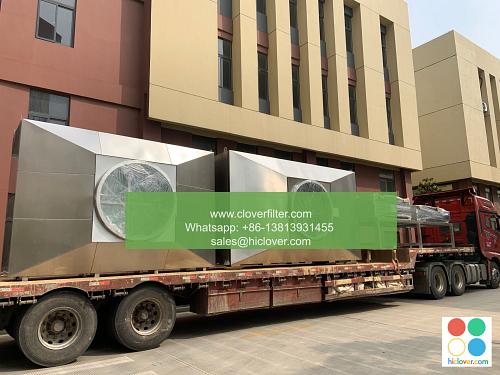The University of Michigan’s Commitment to High-Purity Lab Air Quality

The University of Michigan is renowned for its rigorous academic programs, innovative research, and commitment to excellence in various fields, including science, technology, engineering, and mathematics (STEM). One crucial aspect that supports the university’s research endeavors is the maintenance of high-purity lab air quality. This article will delve into the university’s efforts to ensure optimal laboratory air quality, highlighting the significance of high-efficiency particulate air (HEPA) filtration, laminar flow systems, and variable air volume (VAV) systems in various application areas, including biological safety cabinets, chemical fume hoods, and cleanrooms.
Importance of High-Purity Lab Air Quality
High-purity lab air quality is essential for preventing cross-contamination, ensuring the integrity of research samples, and protecting the health and safety of researchers, students, and staff. The University of Michigan recognizes the critical role that lab air quality plays in supporting its research mission and has implemented various measures to maintain optimal air quality in its laboratories.
Application Areas: Biological Safety Cabinets, Chemical Fume Hoods, and Cleanrooms
The university’s commitment to high-purity lab air quality is evident in its state-of-the-art laboratories, which feature advanced air purification systems, including HEPA filtration and ultra-low particulate air (ULPA) filtration. These systems are designed to remove particulate matter, microorganisms, and chemical vapors from the air, creating a safe and healthy environment for researchers to work with biological agents, chemicals, and other hazardous materials.
Biological Safety Cabinets: Protecting Researchers and the Environment
The university’s biological safety cabinets are designed to provide a sterile environment for working with microorganisms and other biological agents. These cabinets feature HEPA filtration and laminar flow systems to prevent cross-contamination and ensure the integrity of research samples. By maintaining high-purity lab air quality, the university’s biological safety cabinets protect not only the researchers but also the environment from potential biological hazards.
Chemical Fume Hoods: Safeguarding Researchers from Chemical Vapors
The university’s chemical fume hoods are equipped with high-efficiency particulate air (HEPA) filtration and activated carbon filtration to remove chemical vapors and particulate matter from the air. These hoods provide a safe working environment for researchers handling chemicals and other hazardous materials, preventing exposure to toxic substances and ensuring the health and safety of personnel.
Cleanrooms: Maintaining Ultra-Clean Environments for Sensitive Research
The university’s cleanrooms are designed to provide ultra-clean environments for sensitive research applications, including nanotechnology, biotechnology, and pharmaceutical research. These cleanrooms feature advanced air purification systems, including HEPA filtration and ULPA filtration, to maintain extremely low particulate counts and prevent contamination of research samples.
Conclusion
The University of Michigan’s commitment to high-purity lab air quality is a testament to its dedication to excellence in research and innovation. By maintaining optimal laboratory air quality, the university ensures the integrity of research samples, protects the health and safety of researchers, and supports the advancement of knowledge in various fields. The university’s state-of-the-art laboratories, featuring advanced air purification systems, biological safety cabinets, chemical fume hoods, and cleanrooms, demonstrate its commitment to providing a safe and healthy environment for researchers to pursue their work.

